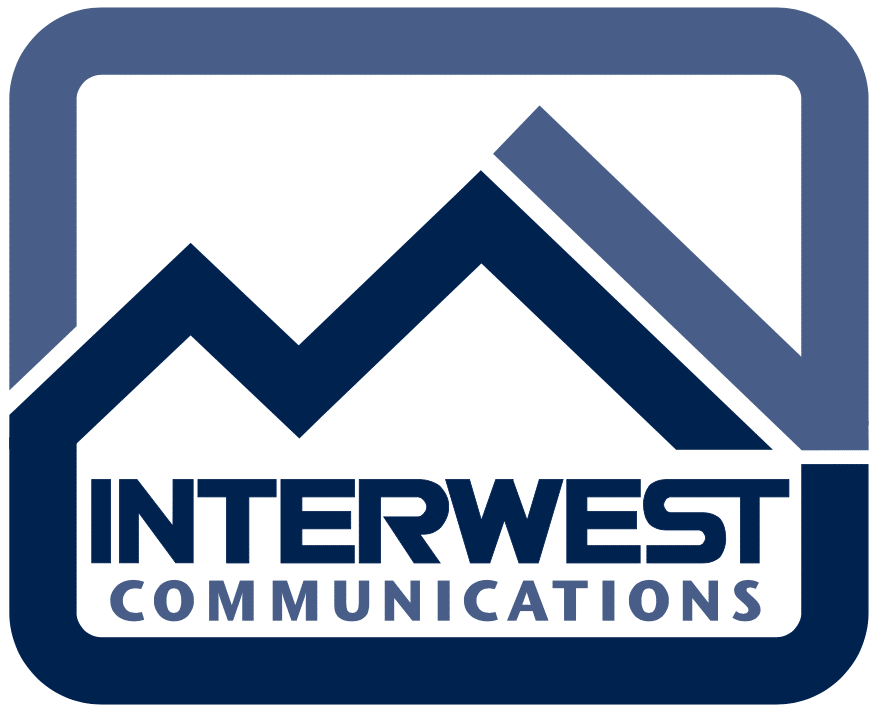- May 27, 2025
- Posted by: Interwest Communications Team
- Categories: News, Uncategorized

Originally posted on March 18, 2024 @ 9:44 am

What is Financial Security in Business: Ensuring Stability and Growth
Financial security in business pertains to the assurance that a company has adequate resources to meet its financial obligations, sustain operations, and invest in future growth. It involves a deep understanding of various financial factors including cash flow, debt management, and risk mitigation.
Achieving financial means that a business is not only stable in the present but also prepared for unexpected financial downturns or opportunities that may arise.
It’s crucial for businesses to prioritize their financial health to preserve longevity and stakeholder trust. To secure a firm financial foundation, businesses typically employ comprehensive strategies that encompass risk management, maintaining liquidity, and wise investment. This ensures they are resilient against market fluctuations and economic changes.
Companies also need to be aware of regulations guiding securities and investments to navigate the financial landscape responsibly and legally.
By aligning these elements, a business can create a robust environment that protects and grows its financial assets over time.
Key Takeaways
- Financial security is pivotal for a business’s operational stability and future growth.
- Strategies to enhance financial security include risk management, maintaining cash flow, and smart investment decisions.
- Compliance with regulation is essential for sustaining long-term financial security.
Understanding Financial Security

Financial security in business is a multifaceted concept involving the stable generation of income and the effective management of finances to achieve your financial goals. It requires a robust strategy encompassing thorough planning, diligent investing, and consistent monitoring.
Key Concepts of Financial Stability
In the realm of business, financial stability is underpinned by several key principles.
First, it hinges on a stable income stream, which covers operational expenses and supports the pursuit of longer-term financial goals.
Financial reserves, or emergency funds, are paramount for weathering unforeseen challenges and maintaining operations.
- Liquidity: Your business should have ready access to funds.
- Debt Management: Keeping debt at manageable levels ensures that it doesn’t threaten financial stability.
- Profitability: Over time, the business must generate more revenue than expenses to ensure sustainability.
Importance of Financial Security for Businesses
For a business, achieving financial security means more than just making a profit. It’s about creating a buffer to protect against uncertainties and ensuring that investing activities feed into future growth and stability.
Short-term security translates to handling immediate obligations without strain, while long-term security involves strategic planning for future growth and prosperity.
A business that is financially secure can also take advantage of new opportunities and is well-positioned to handle industry fluctuations with confidence.
- Risk Reduction: Ensures the business can continue to operate despite economic shifts.
- Investor Confidence: Financially secure businesses attract potential investors and maintain positive relationships with creditors and stakeholders.
Building Blocks of Financial Security

Achieving financial security in business is a multifaceted process that fundamentally comprises managing debt efficiently, building savings, and formulating effective investment strategies.
Effective Debt Management
Your approach to debt management is crucial to maintaining financial security. Typically, this starts with prioritizing high-interest debts for early repayment to decrease overall interest costs.
To manage your obligations, consider structuring them through consolidation, which could potentially lower interest rates and simplify monthly payments.
The Role of Savings
Having funds readily available in a savings account is vital for short-term needs and emergencies. This safety net can protect you from taking on additional debt during unforeseen financial challenges.
Aim to maintain a sufficient balance that equates to at least three to six months’ worth of operating expenses.
Investment Strategies
Investing is the cornerstone for long-term financial growth for both you and potential investors. Diversifying your investment of money across various asset classes can mitigate risks and maximize returns.
Conducting thorough research and perhaps consulting with a financial advisor can help develop a strategy that suits your business’s financial goals and risk tolerance.
Strategies for Enhancing Financial Security

To safeguard your business’s financial well-being, you need to focus on diversifying income, planning for retirement, and establishing an emergency fund.
This ensures you’re prepared for the future, mitigating risks, and maintaining stability during unpredictable events.
Diversification of Income Streams
Expanding your income sources is vital. You enhance financial security by not relying on a single product, service, or client.
Consider developing new offerings, entering different markets, or investing in assets that generate passive income.
Retirement Planning
Effective retirement planning is crucial for long-term financial security.
Define your retirement goals and calculate the funds needed to cover your future living expenses. Allocate a portion of your business income to a retirement savings account dedicated to these goals.
Emergency Funding
Emergencies are inevitable, so it’s essential to have an emergency fund.
Aim to save enough to cover at least six months of living expenses or operational costs. This financial buffer helps combat unforeseen events causing cash flow interruptions.
Financial Risk Management

In the realm of business, maintaining financial security hinges on effectively managing an array of financial risks. This involves identifying potential threats to your financial stability and implementing strategies to mitigate their impact.
Understanding and Mitigating Risks
Risks come in various forms, and understanding them is the first step toward managing your business’s financial health. You should conduct a thorough risk assessment to identify what could potentially harm your financial stability, such as market fluctuations, operational failures, or credit issues.
Once pinpointed, employ strategies like diversification, hedging, or setting up an emergency fund to mitigate these risks. Regular financial analysis helps to forecast and prepare for these uncertainties, ensuring that your business can weather financial storms and avoid being blindsided by unforeseen events.
Insurance and Protection
Insurance is a critical tool for protecting your business from risks that can’t be otherwise mitigated. It transfers the financial burden of certain risks to the insurer, safeguarding your business from catastrophic losses due to emergencies or liability issues.
Make sure to work with a credible insurer to craft a policy that covers significant risks pertinent to your industry. Whether it’s property damage, liability, or creditor claims, the right insurance plan contributes significantly to your financial security, serving as a buffer against potential economic shocks.
Maintaining Cash Flow and Liquidity
To safeguard the financial security of your business, effectively managing your cash flow and ensuring liquidity are critical. These efforts help you meet your financial obligations on time and support business growth.
Managing Revenue and Expenses
To maintain a positive cash flow, you must balance your income with your expenses. This requires careful monitoring of money coming in from sales or services and money going out for supplies, salaries, and other operational costs.
Utilize budgeting strategies to control costs and predict your monthly expenses. Additionally, regularly analyzing your company’s financial reports can spotlight areas where you can reduce costs or optimize revenue streams.
- Income: Increase by improving sales, adjusting pricing strategies, or expanding markets.
- Expenses: Decrease by negotiating better terms with suppliers, cutting non-essential spending, or streamlining processes.
Access to Capital
Ensuring access to capital is a proactive measure for managing cash flow challenges and maintaining liquidity.
A line of credit can provide a safety net for unexpected expenses or shortfalls in cash flow. Moreover, effective debt management, including minimizing credit card debt and other high-interest liabilities, is essential for financial stability.
Debt and Equity Financing
In business, financial security can often depend on the right mix of debt and equity financing. This balance affects everything from your company’s leverage to the control you retain over operations.
Leveraging Loans and Credit
When you leverage loans and credit, you’re using borrowed money to fund your business operations with the intention of generating returns greater than the interest expenses.
Debt securities, like bonds and notes, are common ways to raise capital; they require repayment of principal along with interest rate charges.
For instance, a corporate bond is a loan the investor makes to your company which you agree to pay back with interest.
Advantages:
- Fixed repayment schedule
- Interest is tax-deductible
- No dilution of ownership
Disadvantages:
- Increased financial risk due to fixed repayments
- Can hinder cash flow if overly leveraged
Equity Options for Businesses
Equity financing involves exchanging a portion of your business ownership for capital. This typically means issuing equity securities, such as stock, which gives investors a claim on future earnings and assets.
Stock options may also be granted to employees or investors, giving them the right to purchase stock at a specific price in the future.
Advantages:
- No mandatory repayments; less financial strain
- Shareholder’s goals often align with the company’s success
Disadvantages:
- Dilutes existing ownership
- May lead to differing viewpoints on business direction
Understanding Securities and Investment Regulation
To effectively navigate the financial markets, you need a clear understanding of both securities and the regulations that govern them. This knowledge ensures compliance and informs investment strategies.
Securities Defined
Securities are fungible and tradable financial instruments used to raise capital in public and private markets.
There are two main types: equity securities, which represent ownership in a company (such as stocks), and debt securities, like bonds, which are essentially loans made by an investor to a borrower.
Regulatory Environment
The regulatory framework for securities in the United States started with the Securities Act of 1933, which mandates complete disclosure of relevant financial information and prevents deceit in securities sales.
Self-Regulatory Organizations (SROs), such as the National Association of Securities Dealers (NASD) and the Financial Industry Regulatory Authority (FINRA), also play a critical role in the oversight of the industry. They enforce ethical trading practices and compliance with regulations, aiming to maintain market integrity and protect investors.
